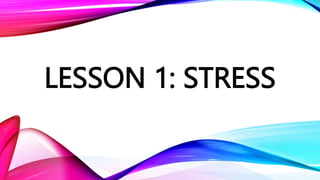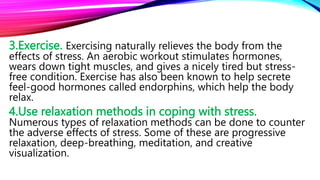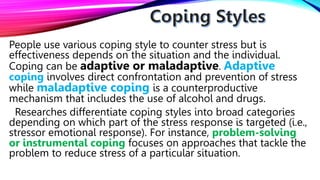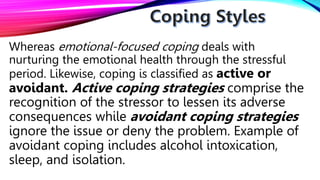The document discusses stress, its causes and effects. It defines stress as the body's reaction to challenging events. Stress can be positive (eustress) or negative (distress) depending on its impact. Negative stress often impairs performance while positive stress promotes growth. The body responds to stressors through its general adaptation syndrome which progresses from alarm to resistance to exhaustion if stress is chronic. Ways to manage stress include reducing stressors, exercising, relaxation techniques, and adaptive coping strategies like problem-solving and seeking support. Maladaptive coping involves avoidance behaviors like substance abuse.

































